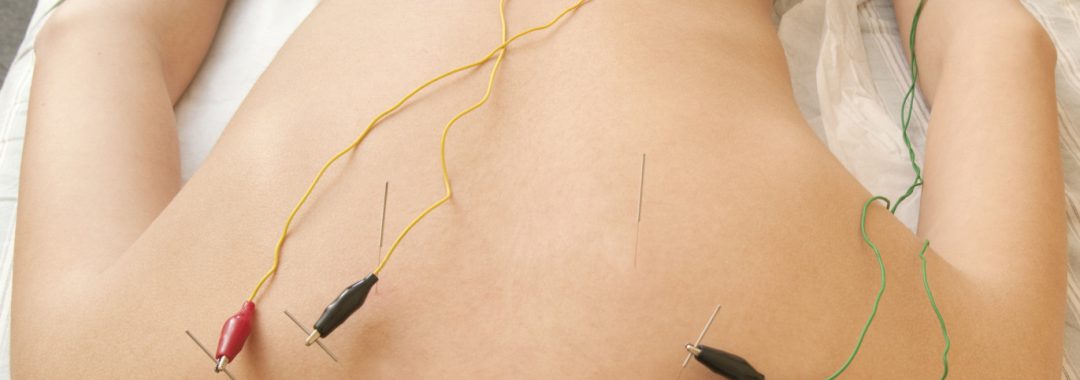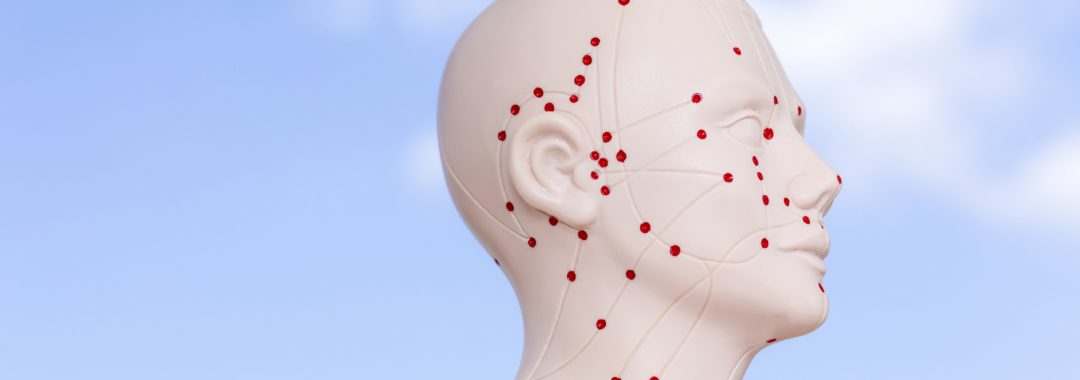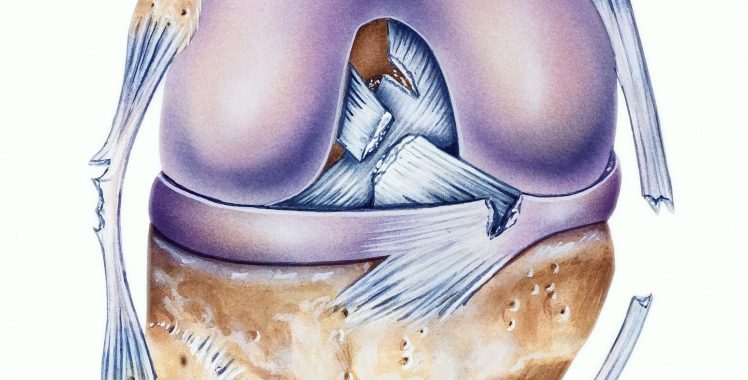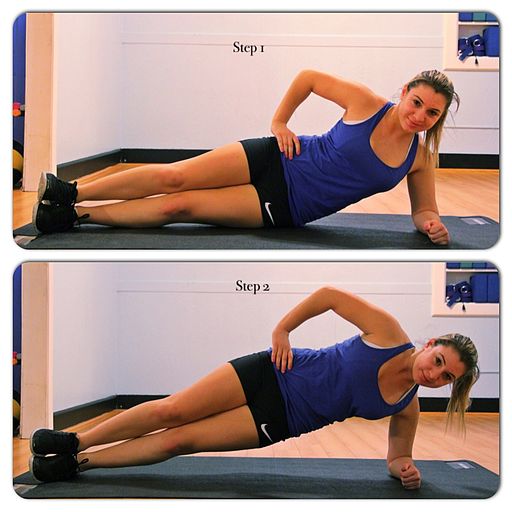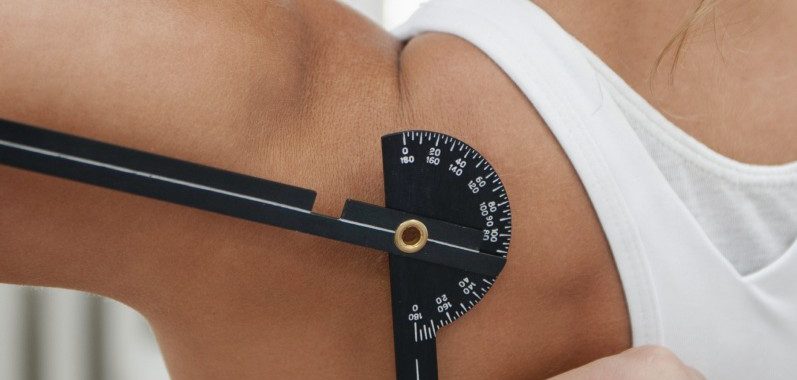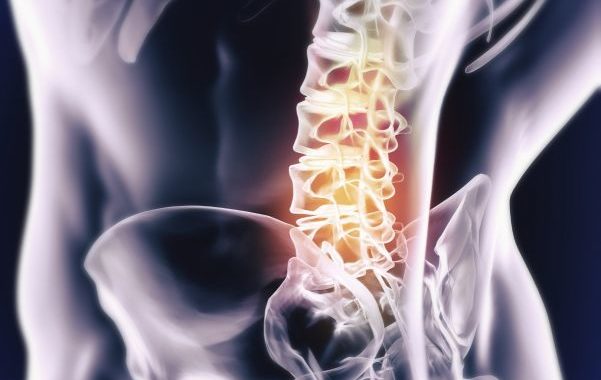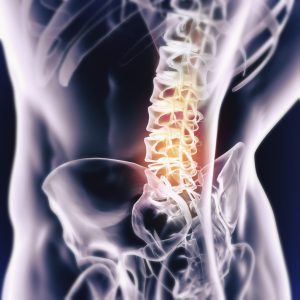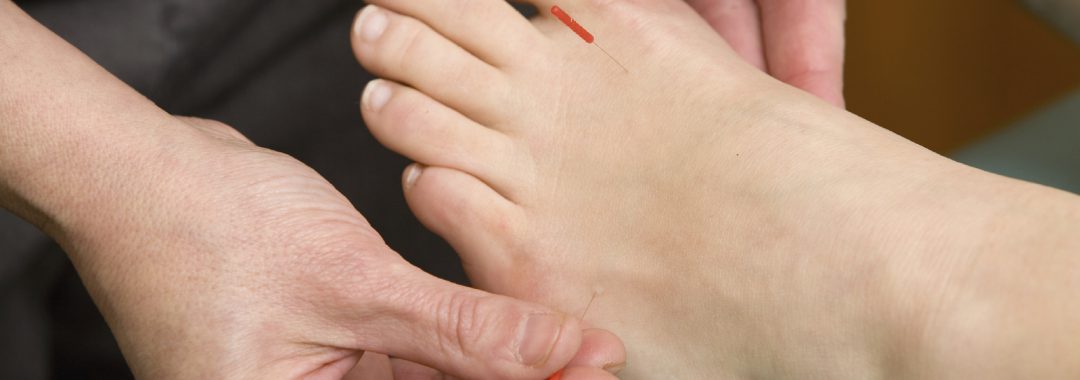| Topics | Class Notes | Class Videos |
|---|---|---|
| How Interactive E-books work: read this first | View Guide | |
| Electroacupuncture for Orthopedic Conditions | View Slideshow | Videos will be posted after 7-14-21 webinar |
Category Archives: Live Webinars
Electroacupuncture for Orthopedic Conditions – Live Webinar
- This content is restricted to buyers of Electroacupuncture for Orthopedic Conditions – Live Webinar.
Professional Ethics and Risk Management – Live Webinar
- This content is restricted to buyers of Professional Ethics and Risk Management — Live Webinar.
Hip, Thigh, Knee
With Instructor Anthony Von der Muhll, L.Ac., DAOM, DNBAO, FAIPM
has been added to your cart!
First time user? Your account will be automatically be created after purchase. Please note:
--Webinars require continuous attendance on the date(s) offered to receive PDAs/CEUs. If you cannot attend, please consider a self-paced distance-learning version instead, if available, or another class that you will be able to attend.
--Ebooks are included with class purchase--please do not purchase both. When purchased separately, Ebooks are for informational purposes only--no PDAs/CEUs.
Questions? Please visit our FAQ page. Thank you for your purchase!
Basics of Hip, Thigh, Knee
has been added to your cart!
First time user? Your account will be automatically be created after purchase. Please note:
--Webinars require continuous attendance on the date(s) offered to receive PDAs/CEUs. If you cannot attend, please consider a self-paced distance-learning version instead, if available, or another class that you will be able to attend.
--Ebooks are included with class purchase--please do not purchase both. When purchased separately, Ebooks are for informational purposes only--no PDAs/CEUs.
Questions? Please visit our FAQ page. Thank you for your purchase!
Hip, Thigh, Knee with Anthony Von der Muhll
Sat-Sun July 13-14, 2024, 9:00-6:00
at ACCHS, 1600 Broadway, Oakland CA
16 NCCAOM PDAs CAB & CEUs Category 1 approved
has been added to your cart!
First time user? Your account will be automatically be created after purchase. Please note:
--Webinars require continuous attendance on the date(s) offered to receive PDAs/CEUs. If you cannot attend, please consider a self-paced distance-learning version instead, if available, or another class that you will be able to attend.
--Ebooks are included with class purchase--please do not purchase both. When purchased separately, Ebooks are for informational purposes only--no PDAs/CEUs.
Questions? Please visit our FAQ page. Thank you for your purchase!
Hip, Thigh, Knee: Review and Practicum Lab with Anthony Von der Muhll
Monday July 15, 2024, 9:00-6:00, at ACCHS, Oakland CA
8 NCCAOM PDAs approved
CEUs Category 1 available upon request received prior to June 15, 2024
has been added to your cart!
First time user? Your account will be automatically be created after purchase. Please note:
--Webinars require continuous attendance on the date(s) offered to receive PDAs/CEUs. If you cannot attend, please consider a self-paced distance-learning version instead, if available, or another class that you will be able to attend.
--Ebooks are included with class purchase--please do not purchase both. When purchased separately, Ebooks are for informational purposes only--no PDAs/CEUs.
Questions? Please visit our FAQ page. Thank you for your purchase!
Hip, Thigh, Knee: Distance-Learning Course with Anthony Von der Muhll
16 Distance-learning NCCAOM PDAs pending
CEUs Category 1 available upon request
has been added to your cart!
First time user? Your account will be automatically be created after purchase. Please note:
--Webinars require continuous attendance on the date(s) offered to receive PDAs/CEUs. If you cannot attend, please consider a self-paced distance-learning version instead, if available, or another class that you will be able to attend.
--Ebooks are included with class purchase--please do not purchase both. When purchased separately, Ebooks are for informational purposes only--no PDAs/CEUs.
Questions? Please visit our FAQ page. Thank you for your purchase!
Clinical Anatomy, Kinesiology, and the Jing-Jin ("Sinew meridians" or Myofascial Tracts)
- Bones, joints, muscles, tendons, and neurology
- Posture and motion dysfunctions
- The arthritic progression: strain/sprain, derangement, degeneration
History-taking for the hip, thigh, and knee: key diagnostic questions
- "Red flag" signs and symptoms of urgent/serious medical conditions potentially warranting referral to physician care: spinal neuropathy; fractures; joint infection, hemarthrosis and derangement; arterial compression, venous thromboses, and avascular necrosis; pediatric/developmental conditions
- Differentiating symptoms of joint, muscles, tendon, ligament, meniscus and nerve injuries
- Neural hypersensitization and psycho-social factors
- Functional capacity questionnaires for reporting to managed care insurance
Physical exam of the hip, thigh, and knee: how findings can guide treatment with acupuncture modalities
- Observation of gait dysfunctions
- Surface anatomy, inspection and palpation
- Hip and knee joint active range-of-motion, tracking and functional tests: measurements, diagnostic significance
- Hip and knee passive range-of-motion and joint-play/end-feel stress tests
- Buttock and thigh manual strength and length testing for over 20 key muscles
- Special orthopedic tests for the hip, thigh, and knee
- Documentation of physical exam findings
- Measuring and reporting functional capacity baselines and treatment outcomes
- Clinical flow charts to facilitate efficiency and accuracy in examination
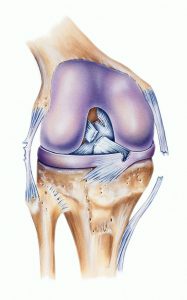
Diagnosis, Pattern Identification, and Treatment
Hip joint
- Hip tendinitis/apophysitis
- TFL, rectus femoris and sartorius strains
- Bursitis: greater trochanter, ischial tuberosity, iliopsoas
- Femoral acetabular impingement and hip joint labral tears
- Hip degenerative joint disease/osteoarthrosis
Thigh and knee joint
- Acute strains and chronic myofascial pain: quadriceps, hamstrings, adductors, popliteus
- Patello-femoral and pes anserine tendinitis and bursitis
- Iliotibial band friction and chondromalacia patella syndromes
- Sprains and chronic hypermobility: ACL, MCL, LCL, PCL, superior tibio-fibular joint
- Meniscal and coronary ligament tears and degeneration
- Knee degenerative joint disease/osteoarthrosis
Peripheral compression neuropathies
- Sciatic nerve entrapment: hamstrings
- Lateral femoral cutaneous nerve entrapment
Treatment modalities include:
- Myofasicial Trigger Needling: iliopsoas, tensor fascia lata, sartorius, quadriceps, hamstrings, adductors
- Prolo-acupuncture: hip joint ligaments, knee collateral, cruciate and coronary ligaments, meniscii, and superior tib-fib joint
- Active Cupping: suction + hip and knee ROM for quadriceps, hamstring, and iliotibial band stretching
- Gua sha, tui na, and taping techniques to normalize hip and knee joint mechanics and patello-femoral tracking
- Electro-acupuncture for sciatic and peripheral nerve entrapment
- 3-edged, lancet and 7-star needle therapies
- Exercise therapy, sport and work ergonomics
Build on your skills with the Review/Practicum Lab
Check back for next live class date, or contact us to be notified by email
Report-Writing for Managed Care: HMO, Personal Injury, Work Comp
With Instructor Anthony Von der Muhll, L.Ac., DAOM, DNBAO, FAIPM
This course builds on Medical Documentation: Essential Best Practices, which is highly recommended as a prerequisite.
has been added to your cart!
First time user? Your account will be automatically be created after purchase. Please note:
--Webinars require continuous attendance on the date(s) offered to receive PDAs/CEUs. If you cannot attend, please consider a self-paced distance-learning version instead, if available, or another class that you will be able to attend.
--Ebooks are included with class purchase--please do not purchase both. When purchased separately, Ebooks are for informational purposes only--no PDAs/CEUs.
Questions? Please visit our FAQ page. Thank you for your purchase!
has been added to your cart!
First time user? Your account will be automatically be created after purchase. Please note:
--Webinars require continuous attendance on the date(s) offered to receive PDAs/CEUs. If you cannot attend, please consider a self-paced distance-learning version instead, if available, or another class that you will be able to attend.
--Ebooks are included with class purchase--please do not purchase both. When purchased separately, Ebooks are for informational purposes only--no PDAs/CEUs.
Questions? Please visit our FAQ page. Thank you for your purchase!
Check back for next live class date, or contact us to be notified by email
Live classes and webinars feature instructor-lead peer review/feedback regarding chart notes, and comparison of electronic and on-line documentation systems
Medical report-writing skills are vital for treatment authorization requests and reimbursement for HMO, Personal Injury and Workers Compensation cases. Review and apply best practices for the particular requirements of managed care, including:
- Initial and follow-up evaluations: setting treatment goals, present outcomes, and making recommendations for future care to support reimbursement and treatment authorization/re-authorization requests
- Comparison of electronic health records systems for managed care reporting
- Using standardized functional capacity questionnaires to measure subjective assessments of progress
- Pain scales: how to use them accurately and reliably
- Specific requirements of the California Workers Compensation system: initial and progress reports (PR2s)
- Documentation and reporting of objective measurements of functional capacities and other key baselines, including:
- Findings from observation and inspection
- Joint range-of-motion, tracking and stability
- Muscle strength
- Sensory function
- Tenderness
- Limb girth and skin lesions
- Orthopedic and neurologic assessments
- Special tests and physical examinations for other body systems
- Non-quantifiable assessments of functional capacity
Distance learning/self-study, E-book and live class notes feature sample initial functional capacity evaluations and re-evaluation reports for managed care insurance.
Live class features instructor-lead peer review/feedback regarding student reports.
***Please note: For Certification in Acupuncture Orthopedics, either the live class (8 hours/CEUs/PDAs), or the distance-learning class (5 hours CEUs/PDAs) + one live 3-hour clinical case mentorship meeting focused on medical documentation (no CEUs/PDAs) is required.***
Student Ratings and Comments
from evaluations of a prior live class offered in 2016, as required by California Acupuncture Board
Respondents: 13 of 17 enrolled
Average rating: 99/100
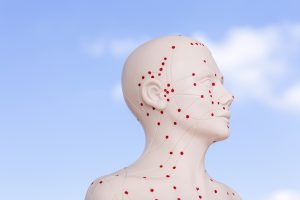
- “Anthony as always is superbly professional, knowledgeable, and encouraging improvements in clinical practice. Thank you!” --Anonymous
- “All of your classes have been instrumental in my ability to improve patient care–but it could be a 2-day course to cover more. Thank you!” –Jennifer Root, L.Ac.
- “I always enjoy Anthony’s classes, very helpful info.” --Anonymous
Exercise Therapy for Acupuncturists
An Integrative East-West Approach
With Instructor Anthony Von der Muhll, L.Ac., DAOM, DNBAO, FAIPM
Former Physical Therapy Aide, Athletic Training Assistant, and Certified Personal Trainer, American College of Sports Medicine
has been added to your cart!
First time user? Your account will be automatically be created after purchase. Please note:
--Webinars require continuous attendance on the date(s) offered to receive PDAs/CEUs. If you cannot attend, please consider a self-paced distance-learning version instead, if available, or another class that you will be able to attend.
--Ebooks are included with class purchase--please do not purchase both. When purchased separately, Ebooks are for informational purposes only--no PDAs/CEUs.
Questions? Please visit our FAQ page. Thank you for your purchase!
has been added to your cart!
First time user? Your account will be automatically be created after purchase. Please note:
--Webinars require continuous attendance on the date(s) offered to receive PDAs/CEUs. If you cannot attend, please consider a self-paced distance-learning version instead, if available, or another class that you will be able to attend.
--Ebooks are included with class purchase--please do not purchase both. When purchased separately, Ebooks are for informational purposes only--no PDAs/CEUs.
Questions? Please visit our FAQ page. Thank you for your purchase!
Check back for next live class date, or contact us to be notified by email
"Is there anything I can do on my own to treat this?
"Should I do this exercise my fitness trainer showed me, even though it hurts?"
"I want to get more cardio and lose weight. Should I run, swim, or bike?"
"When can I go back to my gym workout/yoga class/marathon training?"
How often do we hear our patients ask questions like this? Now you'll have some better answers...
Easy-to-teach exercises can improve clinical outcomes by actively involving patients in self-care, and can complement AOM modalities. Drawing from qi gong, yoga, Pilates, and other techniques, we will discuss exercises for specific injuries to help patients to:
- Reduce stress, muscle tension, pain, anxiety and depression
- Accelerate healing and reduce chronicity of sprain/strain injuries
- Re-stabilize hypermobile joints, and restore normal joint tracking and biomechanics
- Slow and allow for reversal of joint degeneration that leads to osteoarthrosis
- Enhance the treatment of muscles, nerves, and other tissues and systems that contribute to chronic pain
- Maintain bone density, muscle strength and flexibility, coordination, and balance to reduce the risk of falls and injuries
- Support the patient in an active lifestyle and meeting their goals for health, fitness, work, sports and recreation
- Improve health of internal organs; the cardiovascular, lymphatic, endocrine & immune systems; mind, mood, & sleep; & overall quality & quantity of life.
Topics include:
- When to prescribe--or "un-prescribe" exercises: post-injury/surgery, chronic pain, and health maintenance
- How best to co-manage patients with physical therapists and surgical rehabilitation teams
- Which exercises can patients safely and effectively perform at home, for what body regions, systems, and injuries
- Analyzing common qi gong, yoga, Pilates, gym workouts, etc. for their risks and benefits, from an integrative East-West orthopedic and neurologic perspective
- Adapting exercises for specific conditions and patients
- How to integrate exercise therapy into the flow of a busy acupuncture clinic
- Scope-of-practice, coding, billing and malpractice considerations
And what's good for our patients is good for us--we'll review self-care exercises and ergonomics for acupuncturists!
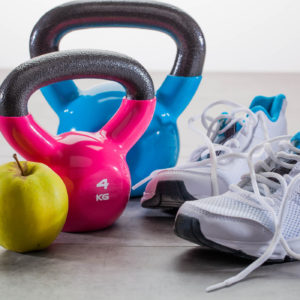
General considerations in exercise therapy
- Review of L.Ac. scope-of-practice issues
- Risks and benefits: when to prescribe, un-prescribe, or refer out for co-management
- Co-managing with physical therapists: phases, benchmarks and goals of post-injury/surgery rehabilitation
- Exercise cautions and contraindications
- Differentiating exercise-induced injury vs. therapeutic delayed onset muscle soreness
- Prescription essentials: timing, sequence, repetitions, sets, duration, intensity, frequency
Roles of and indications for specific exercise techniques and styles:
- Functional re-training: activities of daily living, work ergonomics, recreation and sports
- Stress reduction: qi gong and breathing exercises
- Flexibility: passive and active stretching, static and flow yoga styles
- Neurologic re-training and coordination
- Strengthening and stabilization exercises
- Joint loosening warm-ups, reciprocal inhibition, and abdominal bracing to improve safety and efficacy across all exercise styles
- Cardiovascular exercise for general health
- Assessing exercise prescription from the viewpoint of jing-jin and zang-fu imbalances
Exercise prescription for specific body regions, injuries and pain
- Spinal exercise prescription: upper body
- Cervical stabilization
- Thoracic mobilization
- Upper extremity exercise prescription
- Scapular stabilization and shoulder strengthening
- Elbow, forearm and wrist exercise therapy
- Spinal exercise prescription: lower body
- Core/lumbar stabilization
- Lower extremity exercise prescription
- Hip strengthening and mobilization
- Knee stabilization
- Calf, ankle and foot rehabilitation
- Putting it all together: posture, gait and ergonomics
Integrating exercise prescription into an acupuncture clinic
- Combining exercise with manual therapy and cupping in the same visit
- Tools, supplies, and space considerations
- Documentation, coding and billing for therapeutic exercise
- Stand-alone exercise classes: insurance, scope of practice and malpractice considerations
- Exercise knowledge and skill development for acupuncturists
Coaching patients on health maintenance through exercise
- Working with patient’s exercise readiness, compliance, tolerance and goals
- Home programs and telemedicine consults
- Group classes vs. individualized training
- Cardiovascular exercise options and prescription
- Recognizing limits and injuries; managing exercise-induced delayed-onset muscle soreness
To get the most out of this class, please wear workout clothes and shoes, and bring the following exercise tools, which you will be able to use later in your clinic. Exercise equipment will not be provided.
- One or more pairs of dumbbells in the 2-10 lb. range (a pair of 8-oz soup cans will do)
- Resistance tubing/bands of light-moderate gauge; also, squeeze balls, rings
- A wobble cushion/disc (e.g. “dynadisc”)
- 6” diameter rigid foam roller
- Yoga/exercise mat + straps or belts
Links are for informational purposes only and do not represent product endorsements. Anthony Von der Muhll does not have any financial relationship with exercise equipment makers or vendors.
Shoulder, Arm, Hand
With Instructors Anthony Von der Muhll, L.Ac., DAOM, DNBAO, FAIPM
has been added to your cart!
First time user? Your account will be automatically be created after purchase. Please note:
--Webinars require continuous attendance on the date(s) offered to receive PDAs/CEUs. If you cannot attend, please consider a self-paced distance-learning version instead, if available, or another class that you will be able to attend.
--Ebooks are included with class purchase--please do not purchase both. When purchased separately, Ebooks are for informational purposes only--no PDAs/CEUs.
Questions? Please visit our FAQ page. Thank you for your purchase!
Shoulder Arm Hand Distance-Learning Module
with Anthony Von der Muhll
16 distance-learning NCCAOM PDAs and CAB CEUs Category approved
has been added to your cart!
First time user? Your account will be automatically be created after purchase. Please note:
--Webinars require continuous attendance on the date(s) offered to receive PDAs/CEUs. If you cannot attend, please consider a self-paced distance-learning version instead, if available, or another class that you will be able to attend.
--Ebooks are included with class purchase--please do not purchase both. When purchased separately, Ebooks are for informational purposes only--no PDAs/CEUs.
Questions? Please visit our FAQ page. Thank you for your purchase!
Check back for next live class date, or contact us to be notified by email
The Shoulder Girdle
Clinical anatomy, kinesiology, & the jing-jin ("sinew meridians" or myofascial tracts)
- Glenohumeral, acromio- and sterno- clavicular joints
- Muscles, tendons and ligaments of the shoulder girdle
- Shoulder bursae
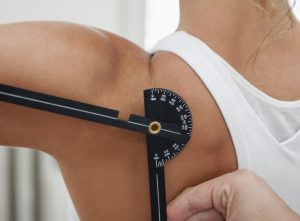
History-taking for the shoulder: key diagnostic questions
- "Red flag" symptoms of urgent/serious medical conditions warranting referral to physician care: fractures, dislocations and complete tears; neuropathies; tumors
- Differentiating symptoms of muscle, tendon, ligament, labral, capsular, and nerve injuries
- Neural hypersensitization and psycho-social factors
- Functional capacity questionnaires for reporting to managed care insurance
Physical exam of the shoulder: how findings can guide treatment with acupuncture modalities
- Observation, inspection and palpation
- Joint active range-of-motion and tracking exam: taking measurements and diagnostic significance
- Assessment of joint stability through end-feel testing
- Muscle length and manual strength testing and referred pain patterns charts for 18 key muscles of the shoulder girdle
- Special orthopedic tests
- Documentation of physical exam findings
- Measuring and reporting functional capacity baselines and treatment outcomes
- Clinical flow charts to facilitate efficiency and accuracy in examination
Diagnosis, pattern identification and treatment for shoulder girdle pain, injuries and disability
- Gleno-humeral joint
- Non-capsular patterns: AMBRI and SLAP (labral) tears
- Capsular patterns: osteoarthorosis, capsulitis, and "frozen shoulder"
- Acromio- and sterno-clavicular joint sprains/separations and hypermobility
- Rotator cuff tendonitis/tendonosus, impingement, and bursitis
- Bicipital tendinopathies
Arm, Wrist, and Hand
Clinical anatomy, kinesiology, and the jing-jin:
- Elbow joints: ulnar-humeral, radio-humeral and -capitellar
- Wrist joints: ulnar-carpal, radio-carpal, and distal radio-ulnar
- Muscles and tendons of the upper- and fore- arm and hand
History-taking for the arm, wrist, and hand: key diagnostic questions
- "Red flag" symptoms of urgent/serious medical conditions potentially warranting referral to physician care: fractures, neuropathies, complex regional pain syndrome
- Differentiating symptoms of muscle, tendon, ligament, joint, and nerve injuries
- Neural hypersensitization and psycho-social factors
- Functional capacity questionnaires for reporting to managed care insurance
Physical exam of the arm, wrist and hand
- Observation, inspection and palpation
- Active and passive range-of-motion examination of the elbow, wrist, and finger joints: measurements and diagnostic significance
- Assessment of joint stability through end-feel testing of the elbow, wrist and finger
- Peripheral nerve sensory and motor exams
- Manual and dynamometer strength testing, muscle length testing, and referred pain pattern charts for 20 key muscles of the arm, wrist and hand
- Special orthopedic, neurologic and vascular tests
- Documentation of physical exam findings
- Measuring and reporting functional capacity baselines and treatment outcomes
- Algorithmic flow charts to facilitate efficiency and accuracy in examination
Diagnosis, pattern identification and treatment for arm, wrist and hand pain, injuries and disability
Posterior & radial tracts: yangming and shaoyang
- Tennis elbow, extensor strains, tendinosus, radial tunnel compression neuritis and palsy
- Radial styloid stenosing tenosynovitis
- Radial collateral ligament sprains and hypermobility
Ulnar tract: taiyang and shaoyin
- Ulnar neuritis/neuropathy
- Ulnar groove compression
- Canal of Guyon compression
- Acute sprains and chronic laxity of the ulnar-carpal joint
- Acute tendonitis and chronic tendonosus
- Golfer’s elbow & “medial epicondylitis”
- Extensor carpi ulnaris
- Flexor carpi ulnaris
- Abductor digiti minimi
- Ulnar collateral ligament laxity & “Little league elbow”
Anterior tract: taiyin, shaoyin, jueyin
- Biceps, supinator and forearm flexor tendonitis and tendonosus
- Median neuritis/neuropathy
- Pronator teres syndrome
- Carpal tunnel syndrome
Intrinsic wrist conditions
- 1st CMC joint pain: sprains, DJD
- Triangular fibrocartilage complex tears
Intrinsic hand conditions
- MCP and inter-phalangeal joints
- Sprains and laxity of finger collateral ligaments
- Degenerative joint disease
- Finger extensor tendonitis
Ergonomics, postural correction and exercise therapy for shoulder, arm and hand conditions:
- Scapular stabilization
- Rotator cuff strengthening
- Forearm exercises
- Wrist stabilization
- Keyboard ergonomics
Build on your skills with the Review/Practicum Lab
Check back for next live class date, or contact us to be notified by email
Low Back, Core and Pelvic Girdle
With Instructor Anthony Von der Muhll, L.Ac., DAOM, DNBAO, FAIPM
has been added to your cart!
First time user? Your account will be automatically be created after purchase. Please note:
--Webinars require continuous attendance on the date(s) offered to receive PDAs/CEUs. If you cannot attend, please consider a self-paced distance-learning version instead, if available, or another class that you will be able to attend.
--Ebooks are included with class purchase--please do not purchase both. When purchased separately, Ebooks are for informational purposes only--no PDAs/CEUs.
Questions? Please visit our FAQ page. Thank you for your purchase!
Basics of Low Back
has been added to your cart!
First time user? Your account will be automatically be created after purchase. Please note:
--Webinars require continuous attendance on the date(s) offered to receive PDAs/CEUs. If you cannot attend, please consider a self-paced distance-learning version instead, if available, or another class that you will be able to attend.
--Ebooks are included with class purchase--please do not purchase both. When purchased separately, Ebooks are for informational purposes only--no PDAs/CEUs.
Questions? Please visit our FAQ page. Thank you for your purchase!
Low Back, Core, Pelvic Girdle:
Anatomy Lab for Acupuncturists
with Jamie Bender
Fri May 3, 2024, 9:00-6:00, at ACCHS, Oakland CA
8 NCCAOM PDAs & CEUs Category 1 approved
has been added to your cart!
First time user? Your account will be automatically be created after purchase. Please note:
--Webinars require continuous attendance on the date(s) offered to receive PDAs/CEUs. If you cannot attend, please consider a self-paced distance-learning version instead, if available, or another class that you will be able to attend.
--Ebooks are included with class purchase--please do not purchase both. When purchased separately, Ebooks are for informational purposes only--no PDAs/CEUs.
Questions? Please visit our FAQ page. Thank you for your purchase!
Low Back, Core, Pelvic Girdle:
History-Taking, Exam, Assessment, Treatment
with Anthony Von der Muhll
Sat-Sun May 4-5, 2024, 9:00-6:00, at ACCHS, Oakland CA
16 NCCAOM PDAs & CAB CEUs Category 1 approved
has been added to your cart!
First time user? Your account will be automatically be created after purchase. Please note:
--Webinars require continuous attendance on the date(s) offered to receive PDAs/CEUs. If you cannot attend, please consider a self-paced distance-learning version instead, if available, or another class that you will be able to attend.
--Ebooks are included with class purchase--please do not purchase both. When purchased separately, Ebooks are for informational purposes only--no PDAs/CEUs.
Questions? Please visit our FAQ page. Thank you for your purchase!
Low Back, Core, Pelvic Girdle:
Review & Practicum Lab
with Anthony Von der Muhll
Mon May 6, 2024, 9:00-6:00, at ACCHS, 1600 Broadway, Oakland CA
8 NCCAOM PDAs approved, CAB CEUs Category 1 available on request received prior to March 31, 2024
has been added to your cart!
First time user? Your account will be automatically be created after purchase. Please note:
--Webinars require continuous attendance on the date(s) offered to receive PDAs/CEUs. If you cannot attend, please consider a self-paced distance-learning version instead, if available, or another class that you will be able to attend.
--Ebooks are included with class purchase--please do not purchase both. When purchased separately, Ebooks are for informational purposes only--no PDAs/CEUs.
Questions? Please visit our FAQ page. Thank you for your purchase!
Low Back, Core, Pelvic Girdle -- Distance-Learning Module
with Anthony Von der Muhll
16 NCCAOM distance-learning PDAs approved. Contact us to request CAB CEUs.
has been added to your cart!
First time user? Your account will be automatically be created after purchase. Please note:
--Webinars require continuous attendance on the date(s) offered to receive PDAs/CEUs. If you cannot attend, please consider a self-paced distance-learning version instead, if available, or another class that you will be able to attend.
--Ebooks are included with class purchase--please do not purchase both. When purchased separately, Ebooks are for informational purposes only--no PDAs/CEUs.
Questions? Please visit our FAQ page. Thank you for your purchase!
Clinical anatomy, kinesiology, and the jing-jin ("sinew meridians" or myofascial tracts)
- Bones, muscles, discs and facet joints, and neurology
- Posture and motion dysfunctions
- The arthritic progression: strain/sprain, derangement, degeneration
History-taking: key diagnostic questions
- "Red flag" symptoms of urgent/serious medical conditions potentially warranting referral to physician care: stenosis, tumors, infection, fractures, organ-referred pain and radiculopathies
- Differentiating symptoms of muscles, joint, disc, and spinal cord, and nerve root injuries
- Neural hypersensitization and psycho-social factors
- Functional capacity questionnaires for reporting to managed care insurance
Physical exam of the low back, core and pelvic girdle: how findings can guide acupuncture treatment
- Observation, inspection and palpation
- Joint exam: active range-of-motion and passive stress testing of the lumbar spine, sacroiliac joint and pubic symphysis
- Neurologic exam: upper motor neuron; leg reflex, sensory, and motor function; sciatic neuropathy
- Manual strength testing and referred pain pattern charts for 10 key muscles of the low back, core and pelvic girdle
- Special orthopedic tests for the lumbo-sacral spine
- Documentation of physical exam findings
- Measuring and reporting functional capacity baselines and treatment outcomes
- Clinical flow charts to facilitate efficiency and accuracy in examination
Diagnosis and Pattern Identification
- Lumbo-sacral sprains/strains, postural and motion dysfunctions, and myofascial pain of the iliopsoas, quadratus lumborum, paraspinals, abdominals and gluteals
- True sciatica vs. radiculitis vs. piriformis myofascial pain
- Radiculopathies and stenosis
- Post-partum pain, insufficiency of the iliolumbar and sacrotuberous ligaments, and dysfunctions of the sacroiliac and pubic symphysis joints
- Chronic lumbo-sacral pain, spondylosis, arthritis, degenerative disc disease, scoliosis
- Spondylolisthesis and compression fractures
- Failed low back surgery syndromes
Treatment
- Myofasicial Trigger Point Needling: quadratus lumborum, iliopsoas, gluteals, hip external rotators, and abdominals
- Prolo-acupuncture: iliolumbar, posterior sacro-iliac, and sacro-tuberous ligaments, pubic symphysis, and spondylolisthesis
- Active Cupping: suction + thoraco-lumbar AROM
- Gua sha and tui na to restore lumbo-sacroliac joint mechanics
- Electro-acupuncture for radiculopathies, cord compression and sciatica
- 3-edged, lancet and 7-star needle therapies
- Exercise therapy, sport and work ergonomics
Build on your skills with the Review/Practicum Lab
Calf, Ankle, Foot
With Instructor Anthony Von der Muhll, L.Ac., DAOM, DNBAO, FAIPM
has been added to your cart!
First time user? Your account will be automatically be created after purchase. Please note:
--Webinars require continuous attendance on the date(s) offered to receive PDAs/CEUs. If you cannot attend, please consider a self-paced distance-learning version instead, if available, or another class that you will be able to attend.
--Ebooks are included with class purchase--please do not purchase both. When purchased separately, Ebooks are for informational purposes only--no PDAs/CEUs.
Questions? Please visit our FAQ page. Thank you for your purchase!
Basics of Calf, Ankle, Foot
has been added to your cart!
First time user? Your account will be automatically be created after purchase. Please note:
--Webinars require continuous attendance on the date(s) offered to receive PDAs/CEUs. If you cannot attend, please consider a self-paced distance-learning version instead, if available, or another class that you will be able to attend.
--Ebooks are included with class purchase--please do not purchase both. When purchased separately, Ebooks are for informational purposes only--no PDAs/CEUs.
Questions? Please visit our FAQ page. Thank you for your purchase!
Calf Ankle Foot:
History-Taking, Exam, Assessment, Treatment
with Anthony Von der Muhll
Sat-Sun July 27-28, 2024, 9:00-6:00, at ACCHS, Oakland CA
16 NCCAOM PDAs approved, CAB CEUs Category 1 pending
has been added to your cart!
First time user? Your account will be automatically be created after purchase. Please note:
--Webinars require continuous attendance on the date(s) offered to receive PDAs/CEUs. If you cannot attend, please consider a self-paced distance-learning version instead, if available, or another class that you will be able to attend.
--Ebooks are included with class purchase--please do not purchase both. When purchased separately, Ebooks are for informational purposes only--no PDAs/CEUs.
Questions? Please visit our FAQ page. Thank you for your purchase!
Calf Ankle Foot:
Review & Practicum Lab
with Anthony Von der Muhll
Mon July 29, 2024, 9:00-6:00, at ACCHS, 1600 Broadway, Oakland CA
8 NCCAOM PDAs approved, CAB CEUs Category 1 available on request received prior to June 29, 2024
has been added to your cart!
First time user? Your account will be automatically be created after purchase. Please note:
--Webinars require continuous attendance on the date(s) offered to receive PDAs/CEUs. If you cannot attend, please consider a self-paced distance-learning version instead, if available, or another class that you will be able to attend.
--Ebooks are included with class purchase--please do not purchase both. When purchased separately, Ebooks are for informational purposes only--no PDAs/CEUs.
Questions? Please visit our FAQ page. Thank you for your purchase!
Contact us to let us know of your interest in Distance-learning PDAs/CEUs
Clinical anatomy, kinesiology and the jing-jin ("sinew meridians" or myofascial tracts)
- Bones, joints, muscles, tendons, and neurology
- Posture and motion dysfunctions
- The arthritic progression: strain/sprain, derangement, degeneration
History-taking for the calf, ankle, foot: key diagnostic questions
- "Red flag" symptoms of urgent/serious medical conditions potentially warranting referral to physician care: spinal neuropathy; fractures; joint derangement and instability; arterial compression, venous thromboses; complex regional pain and compartment syndromes
- Differentiating symptoms of joint, muscles, tendon and nerve root injuries
- Neural hypersensitization and psycho-social factors
- Functional capacity questionnaires for reporting to managed care insurance
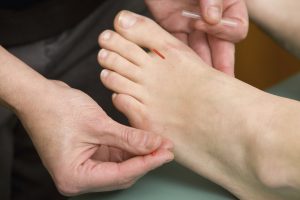
Physical exam of the calf, ankle and foot: how findings can guide treatment with acupuncture modalities
- Observation of gait dysfunctions
- Surface anatomy, inspection and palpation
- Ankle and foot joint active range-of-motion, tracking and functional tests: measurements, diagnostic significance
- Ankle and foot passive range-of-motion and joint-play/end-feel stress tests
- Muscle length and manual strength testing and referred pain pattern charts for 20 key muscles of the calf, ankle, and foot
- Special orthopedic tests for the ankle and foot
- Documentation of physical exam findings
- Measuring and reporting functional capacity baselines and treatment outcomes
- Clinical flow charts to facilitate efficiency and accuracy in examination
Diagnosis, Pattern Identification, and Treatment
Calf
- Gastroc/soleus strains and plantaris ruptures
- Achilles, tibialis anterior, peroneal, and toe extensor tendinitis and nodular tendinosus
- Tibialis posterior dysfunction
- Medial tibial stress (“shin splints”) syndrome
Ankle joint
- Ankle sprains
- Calcaneal bursitis
- Chronic ankle instability: ATF, PTF, and CF ligamentous laxity
- Post-surgical adhesive capsulitis
- Degenerative joint disease/osteoarthrosis
- Sinus tarsi and lateral ankle impingement syndromes
Foot
- Acute sprains/strains
- Plantar fasciitis and metatarsalgia
- Turf toe and sesamoiditis
Peripheral neuropathies
- Peroneal neuropathy
- Tarsal tunnel syndrome
- Morton’s neuritis and neuromas
- Reflex sympathetic dystrophy/complex regional pain syndrome
Treatment modalities include:
- Myofasicial Trigger Needling: tibialis anterior, toe extensors, fibularis group, gastroc/soleus
- Prolo-acupuncture: ankle and foot ligaments, mid-foot, metatarsal and toe joints
- Active Cupping: suction + ankle ROM for calf muscle stretching
- Gua sha and tui na to normalize ankle joint mechanics
- Electro-acupuncture for peripheral nerve entrapment
- 3-edged, lancet and 7-star needle therapies
- Exercise therapy for calf, ankle and foot injury recovery and prevention
- Splints, taping, and footwear prescription
- Stabilization splints and sleeves
- Motion control vs. barefoot theories
- Taping techniques for plantar fasciitis
- Calf, ankle and foot strengthening, stretching and stabilization
Build on your skills with the Review/Practicum Lab.
Check back for next live class date, or contact us to be notified by email
Check back for next live class date, or contact us to be notified by email
